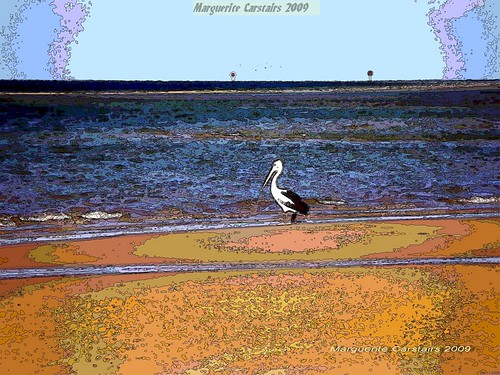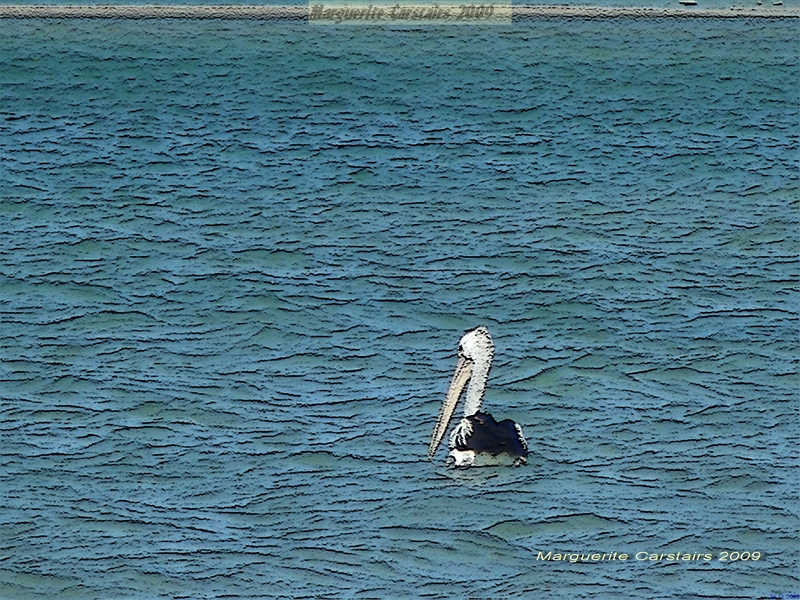Pelicans are around.
Sometimes in large groups, but mostly in pairs
Scientific name: Pelecanus conspicillatus
Family: Pelecanidae
Order: Pelecaniformes
There are seven species of pelicans in the world, all of which are similar in shape and, with one exception, are primarily white in colour. Males are larger than females. The most characteristic feature of pelicans is the elongated bill with its massive throat pouch. The Australian Pelican's bill is 40 cm - 50 cm long and is larger in males than females. Pelicans have large wings and a wingspan of 2.3 m - 2.5 m.
Pelicans are highly mobile, searching out suitable areas of water and an adequate supply of food. Pelicans are not capable of sustained flapping flight, but can remain in the air for 24 hours, covering hundreds of kilometres. They are excellent soarers and can use thermals to rise to considerable altitudes. Flight at 1,000m is common, and heights of 3 000 m have been recorded. By moving from one thermal to the next, pelicans can travel long distances with a minimum of effort, reaching air speeds of up to 56 km/hour.
The bill and pouch of pelicans play an important role in feeding. The bill is sensitive and this helps locate fish in murky water. It also has a hook at the end of the upper mandible, probably for gripping slippery food items. When food is caught, the pelican manipulates it in its bill until the prey typically has its head pointing down the pelican's throat. Then with a jerk of the head the pelican swallows the prey. The bill is delicately built. The lower jaw consists of two thin and weakly articulated bones from which the pouch hangs. When fully extended, the bill can hold up to 13 liters. The pouch does not function as a place to hold food for any length of time. Instead it serves as a short-term collecting organ. Pelicans plunge their bills into the water, using their pouches as nets.
Once something is caught, a pelican draws its pouch to its breast. This empties the water and allows the bird to maneuver the prey into a swallowing position. The pouch can also serve as a net to catch food thrown by humans, and there are sightings of pelicans drinking by opening their bill to collect rainwater.
The Australian Pelican may feed alone, but more often feeds as a cooperative group. Sometimes these groups are quite large. One group numbered over 1,900 birds. A flock of pelicans works together, driving fish into a concentrated mass using their bills and sometimes by beating their wings. The fish are herded into shallow water or surrounded in ever decreasing circles.
Pelicans have an extremely light skeleton, weighing less than 10% of their total body weight.
Facts and figures
Minimum size: 160 cm
Maximum size: 180 cm
Average size: 170 cm
Breeding season: At any time of year
Clutch size: 1 to 3
Incubation: 35 days
Time in nest: 28 days
http://birdsinbackyards.net/bird/82


140x45.jpg)




No comments:
Post a Comment